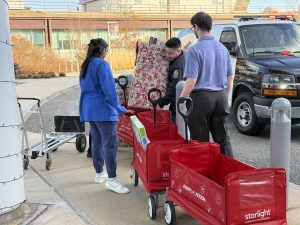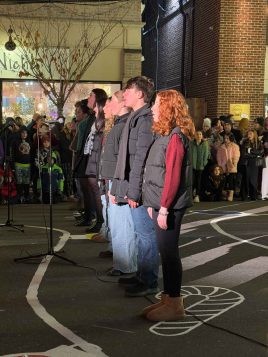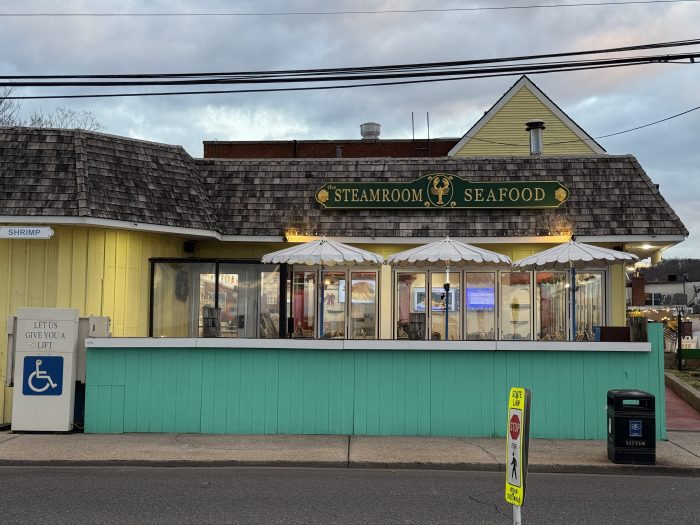By Toni-Elena Gallo
Selden resident Landan Hoenig has always been an altruistic young man.
When asked why Hoenig was interested in starting his two-year-old initiative Teddies for Happiness, his grandmother Christina Rundberg replied, “he has always been this way.”
“Landan is always getting involved with different things — very involved with our church when he was young. He’s just an all around good kid,” Rundberg continued.

This charity operation came to fruition in 2023, when Hoenig, a student at St. Joseph’s University who works as a traffic control officer for the Southampton Town Police Department, had interned with the Town Police in Spring of 2023 through the Suffolk County Community College Criminal Justice Program internship class, and was energized by his experience.
“Doing the internship with them and then getting a job as a traffic control officer with them, actually helped inspire me to create this event,” Hoenig said.
He originally planned to donate only teddy bears to Stony Brook Children’s Hospital but decided to expand the drive to include all types of toys when finalizing his idea. “I had only two months of prep time to put it all together. It was a very small turnout because, with two months, I really wasn’t sure what I was doing, but it was still very successful,” Hoenig explained.
Hoenig credits having a nine-month prepping period this time, helping make this year’s drive on a bigger scale.
“I knew what I was doing this time.”
In a similar format to 2023’s drive, Hoenig gathered the donated toys at a car show, this year held at the Levitt Ballfield Park in Centereach. Eighteen law enforcement agencies were involved in attracting attendees, including U.S. Customs and Border Protection, National Park Service Law Enforcement Rangers, New York State Police and Stony Brook University Police Department, as opposed to last year’s two, New York State Department of Environmental Conservation Police and Centereach Fire Department. There with their service vehicles, they invited visitors to engage with them as well as listen to music with radio stations 106.1 WBLI and 102.3 WBAB, eat Chick-Fil-A chicken sandwiches and cookies, provided by the restaurant chain and, most importantly, donate toys.
“About 150 to 200 people came, and I have eighteen boxes of toys. Half of them I put here at the hospital, and the other half I’m bringing to St. Cuthbert’s Episcopal Church in Selden, where they will be split up between the Saint Cuthbert’s Food Pantry and a local women’s shelter,” Hoenig said. The name of the shelter was not disclosed.
According to Councilmember Jonathan Kornreich (D, Stony Brook), while the Town of Brookhaven did co-sponsor the event and provided the car show’s venue, “all the credit for the hard work goes to Landan for his enormous time commitment in following up with all of these agencies.”
After numerous law enforcement agencies pulled up to Stony Brook Children’s Hospital on Friday, Dec. 6, including the Suffolk County Police Department and a van from the Suffolk County Sheriff’s office, numerous law enforcement agents unloaded their vehicles with the assistance of hospital volunteers.
Addressing the small crowd which gathered to assist and watch Hoenig carry out his mission to “provide joy to people no matter what type of situation they are in, even if it’s just a little bit of joy.” Hoenig thanked “not only the Stony Brook Children’s Hospital, but the great, amazing officers who want to help people. I cannot be more thankful, so thank you for being able to help me.’
“It was so fun organizing all of the boxes for two hours last night, because I am a last minute person,” he laughed.
Joan Alpers, director of Child Life Services at Stony Brook Medicine, was extremely grateful for Hoenig’s charitable spirit. “We are grateful for all of our main donors at this time of year, and he is one of our significant donors, and we’re happy to have him come back.”
“Thank you, I can’t wait to come back next year,” Hoenig smiled.




























